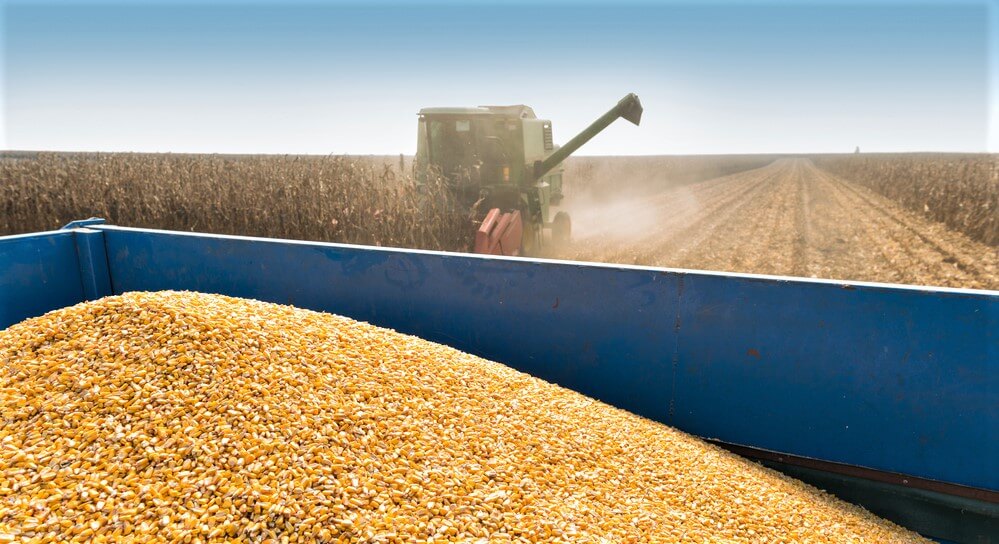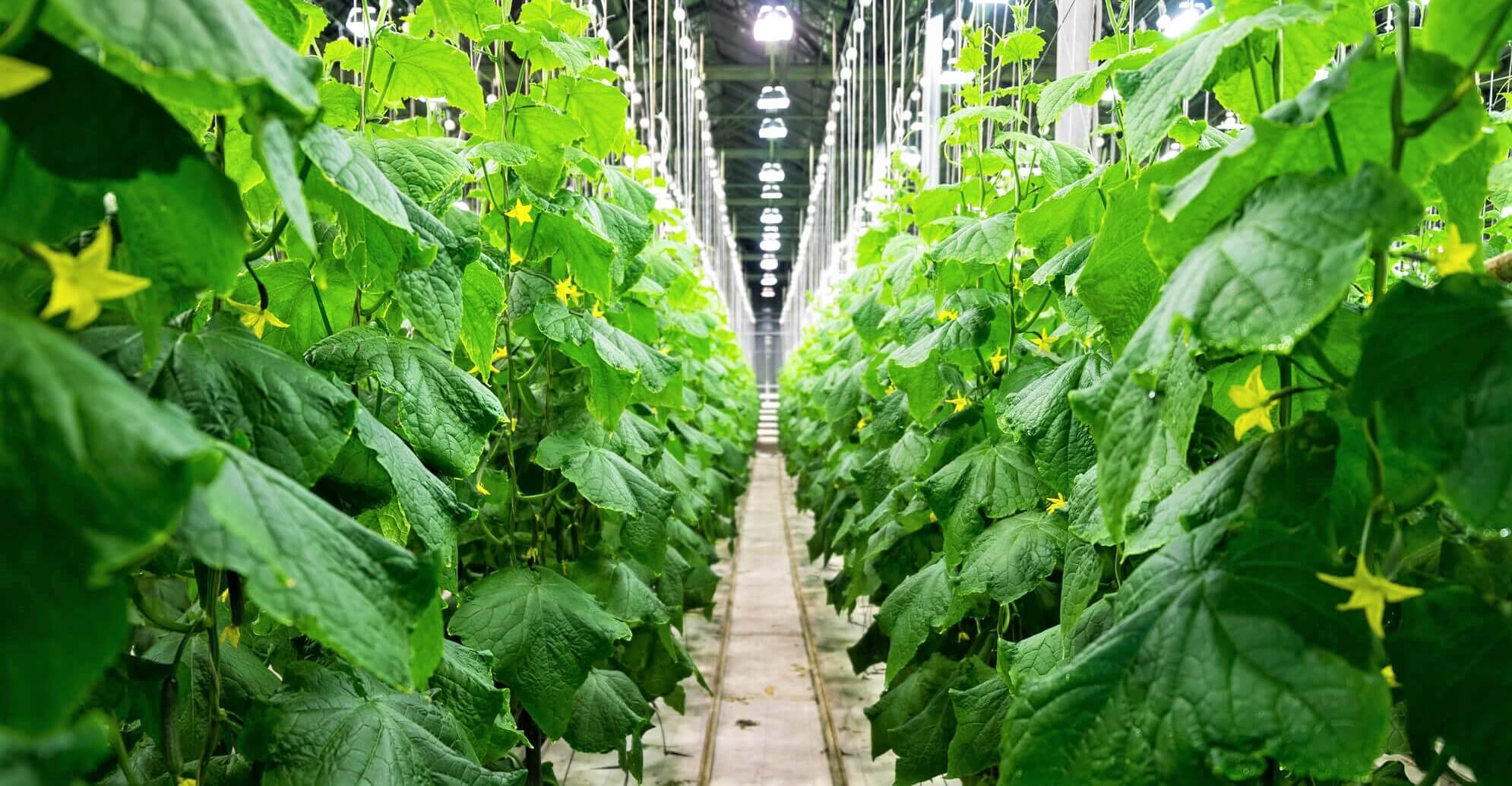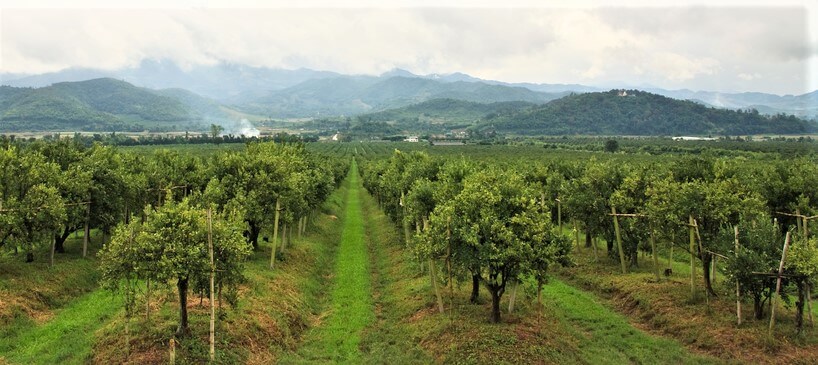Inflation is coming. No, inflation is here… big time. And not just in the United States… it will likely be a lasting …

Alternative Ag Investors Passive Income From Farmland Ownership

Why Buy Managed Farmland?
Farmland. The term evokes images of verdant corn fields, 19th-century timber barons, vast expanses of grain, Old-World vineyards or rustic plows pulled by a mule.
Modern farming is all about technology; automation, artificial intelligence algorithms automatically dosing plants with water and nutrients, “big data” being gathered to feed those algorithms and high-efficiency greenhouses providing just-picked produce to local markets.
Buying managed farmland doesn’t need to break the bank, either. Most offers are in the $18,000 to $50,000 range but I currently have opportunities varying in price from USD $8,000 to $375,000.
But the question remains – why buy farmland? There are many compelling reasons to consider putting a portion of your investment portfolio into farmland; here are a few.
World populations are mushrooming. By 2050 the world will have between 9.3 and 9.7 billion people. Today there are about 7.9 billion people, so we’re talking about an 18-23% increase in the world population over the next 30 years. To put that into perspective, there were only 2.7 billion people in 1955 and 5.0 billion in 1987.
That’s a lot of mouths to feed and people to house, which means a steadily increasing demand for food, fiber and timber utilizing an increasingly finite resource… farmland.
Now comes the kicker: As much food needs to be produced in the next 40 years as the past 10,000 years combined. Go back and read that last sentence again – let it sink in. According to an August 2, 2021, Forbes article, crop production must increase by 70% in order to meet the demand. That’s opportunity.
Think about it. Life will go on without a new car; without a Starbucks on every corner; without the latest fashion; without luxury goods; and without the latest electronic gizmo… but everyone needs food.
There are only two ways to meet the demand – become more efficient to produce greater yields using the same land, or put unused and underutilized lands into production. Hi-tech agriculture is the wave of the future, and that includes a greater reliance on greenhouse production. Many areas of Latin America, Africa and Asia offer productive soil, good growing climates, ample water supplies but an immature agribusiness. Both of these paths to meet demand provide opportunities for the savvy, forward-thinking investor.
We’ve entered a time of economic uncertainty. Aggressive moves by hostile governments make investors jittery; excessive and deficit spending by governments is yielding high inflation; central banks are raising interest rates worldwide. Despite the turmoil ahead, food will always be in high demand unlike the demand for less critical consumer goods.
Scarcity yields value. Only about 11% of global land is arable; that is, able to support non-tree crops. Incredibly, most arable land is used to raise livestock. High demand and low supply mean your farmland will retain its value and, more likely, increase in value at a rate greater than most other investments.
As Mark Twain once famously said, “Buy land — they’re not making any more!” Savvy investors have been following Twain’s advice and snatching-up farmland for decades. Large university endowments, celebrities, pension funds, specialty investment banking divisions and the 1% have been grabbing farmland knowing full well that, indeed, they aren’t making it anymore.
Environmental factors are also reducing the amount of land available for farming. Increasing temperatures, changing rain patterns, and degraded soil quality mean that many areas of the world are no longer able to reliably sustain growing crops. Climate change, regardless of the cause, is having a negative impact on farming.
We all wish we had bought Amazon at $18, Bitcoin at $1, or Apple at $22. Those that did were either visionaries, risk-takers or both. Buying farmland also offers tremendous opportunity with a much lower risk. However, buying in at the point of inception rather than purchasing an established farm means you’re first in line to profit from both the sale of your harvest and the appreciation of your land. To quote Billy Shakespeare, what’s past is prologue, right?
As educational and work opportunities have increased worldwide, more and more farm families are losing their sons and daughters to jobs in the big city. Farmlands that have been lovingly cared for by the same family for more than a century but don’t have a succession plan are coming up for sale and just need the right farm management team to take it over.
So, why do the wealthy put their money into farmland when there are so many other options? For starters, farmland has historically outperformed the Nasdaq, gold, traditional real estate and the S&P 500.
If that didn’t grab your attention, how about the fact that farmland has an overall lower risk than traditional investments or that farmland has steadily increased in value year-over-year?
Did you lose money in the 2008 Great Recession? Did you lose money when the stock market tanked in March of 2020? Farmland owners didn’t lose any sleep because they knew their investment was secure and continuing to grow in value.
In the U.S., farmland values have increased by more than 300% since 2000 according to the National Council of Real Estate Investment Fiduciaries. Internationally, farmland values are lagging behind America but the same phenomenon is taking hold. They further noted that agricultural lands in emerging markets are available at a more affordable cost with the potential for higher returns when compared to developed countries. Land in Asia, Central and South America presents not only an affordable alternative to acreage in America, but labor costs are also substantially lower.
As Paul Polman, CEO of Unilever, said at the World Economic Forum, “Investing in agriculture brings one of the highest returns you can have.” The amount of farmland is finite, it generates an historically stable passive income and has performed better than conventional investments for decades.
The Great Recession of 2008 was a warning to all investors. Those who were more risk-averse were already looking for alternatives to replace or augment their portfolios.
Housing had been considered a safe, stable asset. Many middle-income homeowners considered their house to be their personal piggy bank to be tapped in difficult times. Unfortunately, bankers and government regulators alike indulged in a financial version of Russian Roulette with the mortgage industry and many homeowners’ fortunes were shattered.
In contrast, the years leading up to the worldwide financial crisis saw farmland values climbing and dependably producing positive returns. This trend continued throughout the crisis and beyond, outperforming the S&P 500 and the Dow because farmland values are uncorrelated to the financial markets.
If you follow the commodities markets you might hold a common misconception that farming is highly unpredictable. While that is often true if you’re growing program crops like corn, wheat or soybeans, by focusing on high-value crops and those utilizing the latest in high-tech methodologies, Alternative Ag Investors identifies opportunities for both lower risk and high-profit potential.
While Wall Street prognosticators and financial news talking heads are focused on what’s happening next with GameStop, Apple, Tesla or the price of gold, owners of managed farmland can ignore all the noise, comforted by the fact that the markets for their products are stable and growing.
If you’ve been to the grocery store produce section lately, you’ve noticed that the price of just about everything has gone up appreciably in the last year or so. Minor inflation in the range of 2% or so is a natural consequence of an expanding economy, but what we’re seeing now is different… 2021 was over 7% with predictions of 10% or more for 2022.
Guess what? If you are growing those limes, oranges, strawberries, mangos, dragon fruit or avocados, you’re cashing in on the increase in prices. Your investment is making money on inflation.
Precious metals – gold in particular – are often touted as the answer to inflation. And it’s true that gold typically goes up in value as inflation soars. What most people don’t know is that farmland actually outperforms gold. Not only does the underlying value go up with inflation, but you have returns from the sale of your crops that also go up with inflation.
The value of farmland has historically been closely connected with inflation. Farmland has a 70.00% correlation with the Consumer Price Index (CPI) and a 79.84% correlation with the Producer Price Index (PPI). The simple reason is that as food prices go up, so too does the income from those products and the land also becomes more valuable.
Those of us old enough to remember the hyperinflation of the late 1970s are especially wary of what is to come. The increase in the money supply over the last several years combined with supply chain issues and central banks that are late to recognize the current inflationary environment pushes us to take steps to counter these inflationary times by investing in farmland as a hedge.
According to a Gallup poll, upwards of 55% of Americans own stocks either directly or through mutual funds or exchange-traded funds. The percentage was over 60% before 2008 but hasn’t fully rebounded since the recession. Still, that’s over 180 million people in the U.S. that participate in the stock market. By comparison, less than 0.5% of Americans own farmland; only about 1.5 million.
You can own assets like gold or cryptos, but their value is determined by the market and the broader worldwide economic fluctuations. On the other hand, farmland and the crops they produce create inherent value, especially as the amount of farmland diminishes and worldwide populations continue to grow.
I’ve dipped my toe in the cryptocurrency pond but I’m still not convinced that I won’t lose it all at some point. What do I own? I can’t touch or see it. I don’t even have the assurance that some company produces a service or product that has value.
The markets can (and are) being manipulated and cryptos are possibly ephemeral, but land is tangible. You can smell the dirt. You can grow something in it and not only have the satisfaction that comes from producing food, but you can see and touch what you own.
“You buy 100 acres of farmland and it will produce for you every year. You can buy more farmland, and all kinds of things, and you still have 100 acres of farmland at the end of 100 years.” — Warren Buffett on CNBC’s Squawk Box
I talk a lot about the advantages of earning a “passive income” but what exactly does that mean?
Basically, passive income is derived from an enterprise in which a person is not actively involved. In other words, it is not earned income from a job or other activity requiring your direct participation. You purchase your farmland or greenhouse and someone else manages it for you; you are a passive party in the process.
Like portfolio income, your money is doing the work. The Internal Revenue Service defines passive income as “income from a business in which the taxpayer does not materially participate.” Passive income is taxable income in the United States.
Let’s face it, you’re not going to survive retirement on your Social Security payment. That means tapping other resources such as a pension plan (which are now as rare as hen’s teeth) or more likely your stock and mutual fund portfolio, an annuity, your IRA and the cash you set aside for a rainy day.
Financial advisors will confidently declare that you need a specific value of all your assets to prepare for retirement with the intent of slowly drawing down the value by selling assets until you die. Hopefully, you’ll have enough. Hopefully, you won’t be retired or on the cusp of retiring when the next 2008 crashes the stock market and with it your retirement dreams.
I think a better approach is to focus on how much income you will need and establish income streams that will grow with inflation in addition to the traditional investment portfolio. That’s where owning managed farmland comes in.
Rather than selling the asset (your farmland or greenhouse), you generate a passive income. As you age, you continue to own that asset and enjoy the income that is generated. Not only do you retain the underlying value of your land or greenhouse or trees, you literally enjoy the “fruits” of your investment. Meanwhile, your farm assets continue to increase in value.
Farmland is a tremendous long-term investment and, like most alternative investments, you can get some idea of its value by who chooses to buy it. America’s biggest farmland owner is now Bill Gates. The self-avowed computer nerd owns at least 50,000 acres more than his next closest competitor in the farmland ownership game. The biggest owner worldwide is the government of the People’s Republic of China.
Investing in managed farmland is not a get-rich-quick scheme. However, it is a strategic investment that can create long-term wealth for your family. Long after you’re gone, your spouse, children and grandchildren will continue to benefit from your foresight. Not only can you set yourself up with an income-generating asset, but your heirs as well. How much is it worth to you to know that successive generations will be able to rely on additional income?
Farmland and timberland purchases have been the investment of choice for hundreds of years; it just hasn’t been an option for most people until now. The opportunity to own managed farmland for small or medium-sized investors is a relatively new concept.
By the way, Bill isn’t the only wealthy person to plow (pun intended) his money into farmland. The top 100 largest American landowners include the likes of Ted Turner, the Ford family and Jeff Bezos. Although she’s not one of the largest farmland owners, Oprah Winfrey owns an avocado farm.
Not to be overlooked, an important aspect of owning farmland is that can be good for the environment and supply important social benefits as well.
The investment options you will see offered by Alternative Ag Investors ensure that your crops are grown sustainably and responsibly. In the case of the permaculture options, trees are grown that aid CO2 sequestration and provide habitat for all sorts of creatures. Where irrigation is used, it is a drip system that puts water where it’s needed – near the roots – instead of flood or sprinkler irrigation that wastes a tremendous amount of water. Greenhouses recycle water and use less land than field crops.
In each case, the company makes every attempt to rely on organic methods. Utilizing biofertilizers and natural pesticides are the first line of defense.
The companies I have partnered with are established agricultural companies who are committed to helping and growing the communities where they operate. In addition to providing much-needed employment, one company works hand-in-hand with technical schools to provide farm management training and sponsors a youth soccer league that includes coaching from players on their national team. Another plants mangrove trees in coastal areas to provide habitat for fish. And yet another makes generous contributions to local food banks along with produce delivery to needy local families.
These are companies dedicated to the environment and improving the lives of their employees, their families and communities. They view this approach to farming as their corporate responsibility that will pay them dividends that can’t be measured in dollars and cents. These are companies you can proudly say you are a part of.

Everybody should become a farmer. Farming is going to be one of the
greatest industries of our time for the next 20 to 30 years. I’m convinced
that farmland is going to be one of the best investments of our time.”
— Jim Rogers, co-founder of the Quantum Fund
OK… Those Are Very Compelling Reasons to Buy, But Why Do They Want to Sell Land to Me?
Maybe you’re convinced that owning productive farmland is a good idea, but you’ve got a nagging question. If owning farmland is so great, why would a farm or timberland owner sell their land to you?
As I note in the How to Buy Managed Farmland section, farmers aren’t in the business to sell real estate; they are in the business of growing and selling a product. They don’t wake up one morning and say, “Wow, I’d like to have more investors.” No, it starts with a desire to have more product to sell and that means expanding their current operations.
Sometimes it’s a matter of wholesale vs. retail. A farmer that has sufficient volume can make deals directly with a retailer instead of using the middleman wholesaler. This means the farmer has more control over the gate price of his crop. This also means more profits but first you need to get to that point where you can offer a crop in large quantities.
Higher profits for the farmer also mean higher profits for their investors. It’s a simple principle; scale yields greater profit opportunities. As an investor, you are simply the vehicle from which the farm operator raises the capital to expand and you enjoy a share of the profits.
Buy your own farmland and you, too, can join the ranks of smart outside-the-box-thinking investors. Contact me for options including dragon fruit, limes, cacao, strawberries, teak, oranges, greenhouses and more.
Oh, and you can slyly mention at your next office party or neighborhood barbecue that you own your own farm – just like Oprah and Bill Gates.
If you’re interested in more details, including the company brochure and full financials, click the link below and learn how this opportunity can be a part of your portfolio.
BLOG POSTS
Regardless of what you may think about the recent antics involving GameStop and other stocks, you may have noticed that folks who …
If you’ve been thinking about putting some of your money into farming, congratulations – you’re the type of person who thinks outside …
According to the U.S. Department of Agriculture, roughly 15 billion bushels of corn are grown in an average year in the U.S. …
Are your loved ones prepared for uncertain times ahead? Will they have enough financial resources to weather rough times? Do they have …
Are greenhouses the wave of the future for produce farming? Many experts think so and it might be time for you to …
Farmland. It’s a tremendous long-term investment and, like most alternative investments, you can get some idea of its value by who chooses …
You’ve been working hard and looking down the road towards the day you get to stop working. You’ve been socking away money …
You’ve got some investments but you’re worried about the future. You’ve done your research. You know it’s critical that you diversify your …
Although not an exact quote, that line from Samuel Taylor Coleridge’s 1798 poem the Ancient Mariner is becoming increasingly true at a …
Most of my blog posts are topical, but this week I’m writing about my inspection tour of the greenhouse that my wife …
My Fair Lady Mangos Shortly after booking my flight to Panama, I learned that there had been a fire on the …
During my last trip to Panama, I met with the president of an amazing company that produces specialized coffee and cacao. I …
Update: I originally wrote this blog post on May 29. I knew things were bad at that point, but now they are …
Owning managed farmland is a smart investment. Managed farmland consistently increases in value, is a strong inflation hedge, outperforms the stock market, …
My wife and I reprised our Maui honeymoon during the first 10 days of September and had a fabulous time. When we …
In 2008, as the U.S. and the world were facing a dramatic economic downturn, NuWire Investor developed a list of the top …
Sometimes I hate it when I’m right. Unfortunately, my prediction early last year that we would suffer serious inflation in 2022 has …
Over the years, I have been frequently asked what sustainable agriculture is and why it’s important. And last month Jose, a prospective …
Eight billion. According to the United Nations, that’s the estimated milestone population of the Earth as of November 15. The most current …
Amazing! I recently returned from a multi-day tour of the AgroNosotros coffee and cacao farms in western and north Panama and was …





















